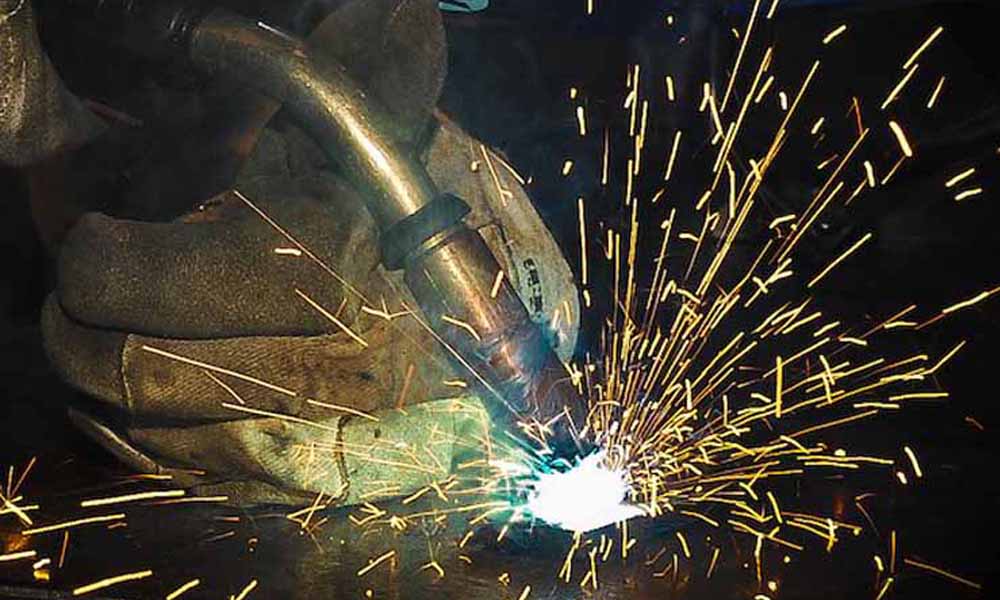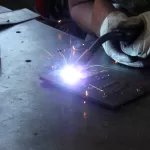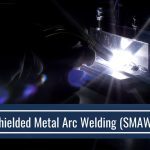Flux-cored is an economical way to weld mild steel if the welder is used only occasionally. Apart from that, it’s only real advantage over mild steel wire with shielding gas is that it can be used outside in moderate wind conditions.
Flux cored wire – what it’s like to use, a video, and a few techniques.
Dieter Rams
It is difficult to use while learning MIG welding as the smoke and flux make it difficult to see what’s going on. Also, the flux doesn’t conduct electricity so you have to be careful not to weld over the same piece twice once it’s cooled.
Welding without gas
Where ordinary mild steel mig welding wire needs an inert gas shield to prevent it from oxidizing when melted, gasless MIG wire has a flux core that forms the shield around the weld to keep oxygen out.
It’s the flux that causes all the weld spatter in the photo and the light-colored crust (slag) on top of the weld.
The slag is easy to remove with a wire brush (apart from around the very edge of the weld), and the resulting weld is reasonably neat.
Immediately after the weld is applied a protective coating of slag bubbles up, which means you can’t actually see what the weld pool is doing. That’s a big downside of gasless welding. In ordinary gas shielded welding you can adjust speed and technique depending on what the weld pool is doing.
My approach was to practice on some scrap to get the settings right, then weld consistently and hope for the best.
The arc seems brighter than for mild steel welding and the weld spatters and gives off white smoke.
A flat zigzag torch movement pulling the torch seems to work well with flux-cored wire. It prevents the arc from dipping back too much into the cooling weld pool (the slag would stop the arc).
The arc is otherwise very stable, but the slag does not conduct so any tack welds would also need to be cleaned up before welding.
The advantage of gasless (other than saving on gas bottle rental) is the ability to weld in windy conditions.
I tried it outside in a gusty wind, and as the photo shows the weld turned out just as good as the one I did inside. Normal gas-shielded welding would have struggled in the slightest breeze.
Welder polarity
The welder should be set up with a positive earth and negative electrode for gasless welding. This is supposed to put more power into melting the wire. I tried welding with the wrong polarity and it seemed to work just as well, though others have reported a huge difference.
Cored wires that have nothing to do with gasless
There are two other types of cored wire that shouldn’t be confused with gasless. The first is the “dual shield” sometimes used on very thick metal for improved weld toughness. It doesn’t have enough gasless flux to shield the weld so is used with shielding gas. The second odd type is “metal cored” wire which is filled with ground metals that can be tuned to give all sorts of properties, again requiring a gas shield.












